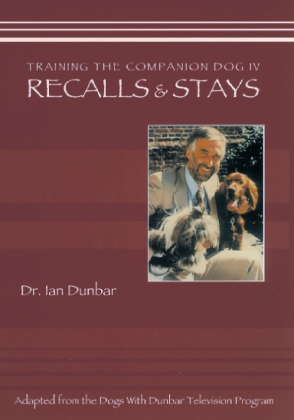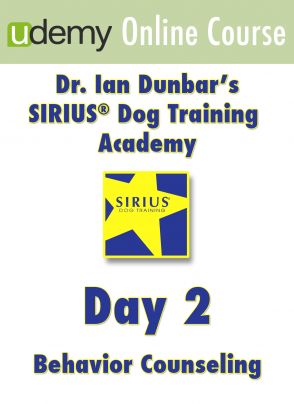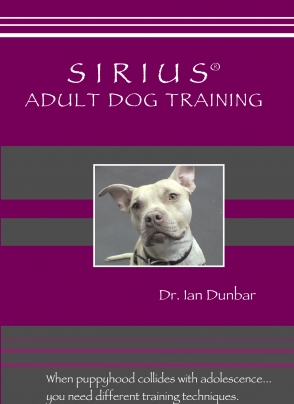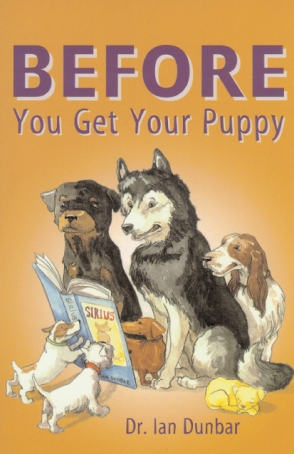Topics include: Recalls from Play. Teaching Off (not to mouth and paw). Teaching & Proofing Stay. Introducing Distance Control.
Ian Dunbar's Top Ten Tips To Become A Successful Dog Trainer

We recently posted a free course on DunbarAcademy.com: The Top Ten Tips to Become a Successful Dog Trainer
1. What's Common & What's Not
You need to understand what are the common issues and problems that dog owners (your potential clients) are likely to face with their dogs. Although the types of behavior and training problems are truly unlimited, just a handful represent the vast majority of cases. Learn 1-2-3 solutions for these few predictable problems and don't get bogged down with the rare cases.
2. What's Dangerous & What's Not
You need to be able to accurately assess whether or not a dog is dangerous. When people describe dogs that fight and dogs that bite people, they often use woolly, ambiguous and emotional language. Danger must be objectively quantified based on wound-pathology (actual damage), so that you can determine whether the case lies within your ability as a trainer and the speed and level of progress the client can expect.
3. Pros and Cons of Different Training Techniques
There are many ways to train a dog but far too many trainers become experts in just one method. Learn the relative advantages and disadvantages of all techniques so that you may choose three preferred approaches for each case, bearing in mind which techniques are most suitable for each owner and each dog.
4. How to Phase out Training Tools
Use training tools but phase then out as quickly as possible, otherwise the dog’s reliability may become dependent upon being on-leash, or you having food in your hand or pocket. A trained dog is one that responds reliably when off-leash, at a distance, maybe distracted and without the continued use of any training aid. Some training equipment, e.g., collars and leashes, may be required in certain situations but even so, off-leash reliability is essential in case the dog slips the leash, or someone leaves the front door open.
5. Kibble, Not Treats
Use regular, dry, dog food as lures and rewards in training and phase out the lures within the very first session. Aside from the fact that most commercial dog treats are “junk food”, the constant quest for tastier (smellier) treats advertises an underlying misunderstanding of the most basic learning principle: that behavior is permanently changed by its immediate consequences. Changing the antecedent (volume/tone of command, or smellier treats) only effects a temporary change in behavior and soon, the food lures will become ineffective bribes.
6. How to Reward Effectively
Learn when and how to reward a dog. Rewarding a dog for every response is pretty silly for numerous reasons, e.g., 50% of reinforced responses are below-median and so, the quality of the dog’s performance will never improve. Learn how to: Use a DR10-20-30 schedule to maximize speed of learning; Incorporate praise, life-rewards and interactive games (e.g., fetch and tug) to maximize response-reliability; and Regularly quantify performance to provide proof of progress.
7. How to Effectively Eliminate Undesirable Behavior
Ignoring undesirable behavior is pretty silly and certainly not fair to dogs or their owners. Learn how to show owners how to quickly, instructively, humanely and effectively deal with undesirable behavior, otherwise they will likely become frustrated and no doubt seek help elsewhere or resort to alternative, aversive and most probably, ineffective means.
8. Clients are not Trainers
Hopefully, you are on your way to becoming an outstanding dog trainer with a vast supply of knowledge and experience, exquisite timing and well-honed instincts for sensing subtle canine cues. However, your client has neither your experience nor your expertise and what may be so easy for you is often so difficult or impossible for them. You’ll need to teach quick-and-easy-to-master techniques that do not require consistency or precise timing.
9 People Skills
In the field of pet dog training, excellent people teaching skills are just as important as excellent dog training skills. In addition to knowing how to train dogs, you need to teach others how and especially, motivate them to want to train their dogs. If you ignore, insult, bully, or belittle clients, even if they use methods, or hold beliefs that you strongly disagree with, they will likely seek help elsewhere and if you lose the client, you also lose the opportunity to help the dog. Show them a better way and win them over by example. If you believe in treating dogs with kindness, be sure to extend that same kindness to their owners.
10. Proactive Promotion & Marketing in the Community
It’s no good moaning and groaning that people don’t come to you until they have a problem with their dog. You need to establish a presence in your community to showcase your training and entice clients to come to you. Write articles in the local press and approach local radio and television stations. Give demonstrations and public lectures. Create relationships with local pet dog professionals like breeders, groomers, shelters and veterinarians.










